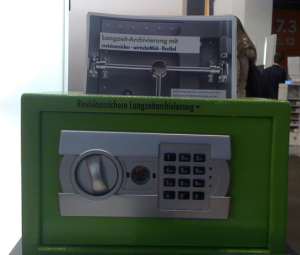Learn more
- Oct 31, 2010
Open World Assumption revisited – What have the Semantic Web and Document Management in common?
Just recently I visited DMS Expo in Stuttgart/Germany which claims to be “Europe’s leading trade fair and conference for enterprise content, output and document management”. It was a large trade show, and of course I didn´t expect to see the Semantic Web playing a central role there but on the other side it became much clearer what´s still missing in most enterprises of today to be an “Enterprise x.0”: Open Minds which consider digital contents as a source to create knowledge out of it.
What´s obvious for most of the Semantic Web evangelists, isn´t clear for at least 75% of all exhibitors (and their clients) at DMS Expo. For these people who are dealing with core systems of today´s enterprise stacks it´s not quite clear that documents could be a valuable resource for enterprise knowledge management. They still focus rather on the basic idea that documents have to be revision-proof, they should be long-term archived and should be put into a safe. That´s quite the opposite of how content is organised in a (Corporate) Semantic Web. In such an environment each little piece of information at least has the potential to get linked with another piece of information.
Open World Assumption is not only about the way we put ontologies in place.
It is also about the basic assumption that people intend to get their content published and linked in a way that this creates an extra value for their colleagues and their organisations.
Documents are containers, and containers tend to be put into containers which are even bigger. In a world where documents are the atomic elements to get information organised the question always is: What should be in there?
On the Semantic Web information is no longer locked inside documents, same with wikis: The idea is to organise every little piece of information in a way that it can improve constantly because it´s out on the (corporate) web. Part of this evolution are mechanisms which help to get pieces linked in a meaningful way. On the Social Semantic Web this job is partly automatically executed and partly done by human beings. In this world which is based on the assumption that people would like to have their information out there on the stage the question always is: How can this piece of information get linked to other pieces in a meaningful way? Which metadata should be put on top?
It´s the people who make the difference, and for many of them there is still no “business use case” based on the “Open World Assumption”.
Here is my proposal: Appreciating each one´s work as a valuable resource for the whole organisation!
And I can hear the question already: Great, but how can I put this into my Excel?
